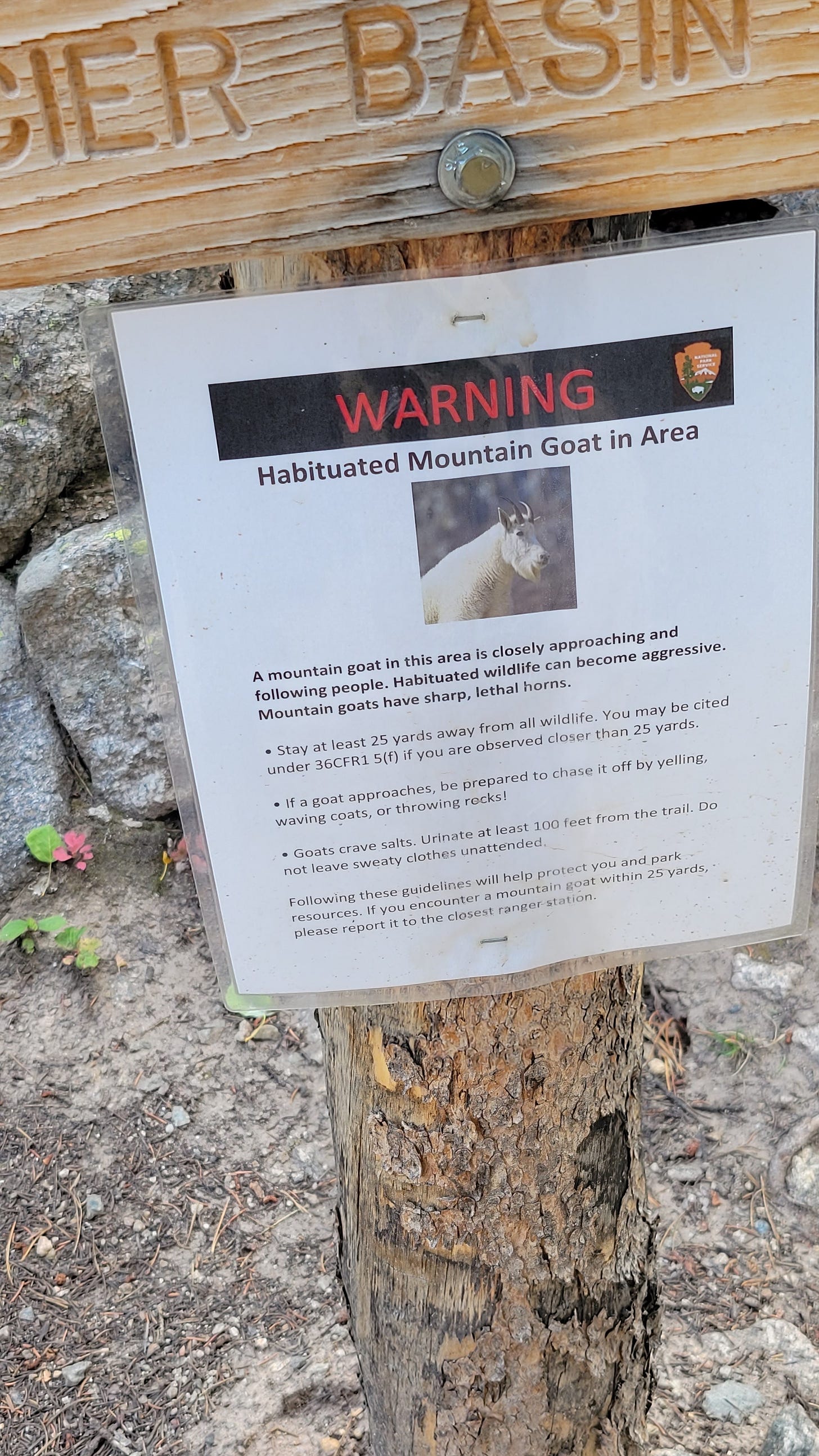What's Growing in Your Trial Garden?
Working within limitations, evading nefarious mountain goats, and reading some dark Denver literature.
Earlier this month, I visited Fort Collins to see the Colorado State University Flower Trial Garden, which is in glorious bloom. The purpose of the garden is to figure out what varieties of plants flourish in the harsh Rocky Mountain climate. According to CSU, “the Rocky Mountain region has unique growing conditions, characterized by high altitude, intense solar radiation, drying winds, severe hailstorms, large fluctuations between day and night temperatures and a season-long need for irrigation.” It sounds like you wouldn’t be able to grow much besides tumbleweeds out here. But then CSU’s trial garden is like blam:
You can’t grow everything here. Palm trees would shiver when the temperature drops. Bougainvillea needs to come indoors for the winter. Rhododendrons don’t blanket the mountainsides here like they do on the more temperate coasts. But look at what you can grow—enough beautiful plants to fill any garden for as long as the growing season lasts.
This reminds me of the quote by tennis great Arthur Ashe: “Start where you are, use what you have, do what you can.” We are all forced to work within limitations. We have limited time, limited money, and limits on our own creative capacities. But that doesn’t mean we should give up in frustration.
I love the story about Keith Jarrett playing on a beat-up, out-of-tune piano in 1975 because he was invited to give a concert by a teenage jazz enthusiast who wasn’t able to secure the sort of top-of-the-line, perfectly tuned instrument he was accustomed to. Jarrett didn’t want to disappoint his hosts, so he worked within the instrument’s limitations, playing around its flaws, to deliver a concert that’s considered among the most brilliant pieces of improvisation in jazz history.
I worked with a student once who had the goal of learning how to create perfectly crafted chapters for her novel. All she’d been able to manage so far were disconnected scenes, and she wanted to learn how to string them together. So we embarked and I coached her on how to structure a chapter. But midway through the semester, she told me she’d just been diagnosed with ADHD, and she didn’t think she could focus well enough to create the kind of chapters she thought were ideal. So I told her, just write your novel out of fragments. Your novel will be as unique as your brain. A traditional structure would not express your individual vantage of the world, which is the point of art.
There’s never one right answer when it comes to art, gardening, life. Make that piano sing, anyway you can. Once you stop fretting about your limitations, you can perceive all the beautiful opportunities to work within your boundaries.
The Assorted Whimsy Portion of The Tumbleweed
I was hiking in Rocky Mountain National Park over the Labor Day weekend and I spotted the cutest little wanted poster ever for a “habituated mountain goat” who has been following people around. Was it wrong of me to briefly yearn to be followed by this friendly goat?
Yes, probably. The author of the poster maintains a stern tone. It warns of fines we’ll face if we let this curious goat approach within 25 yards. Still, it says habituated goats “can become aggressive,” not that this goat in particular has become aggressive. Shouldn’t we give him the benefit of the doubt? Mountain goats are cute and fuzzy and kind of look like they’re smiling! But the author of the poster brooked no foolishness. Goats have “sharp, lethal horns” they remind.
Lethal? Really? As someone who read Lee H. Whittlesey’s exhaustive chronicle of National Park fatalities Death in Yellowstone aloud to my children while we were vacationing in Yellowstone until none of us could stand to hear anymore about hot springs fricasseeing various unfortunate souls, I have a healthy respect for the dangers posed by wild animals. The section on bison-related deaths is the longest and most vivid chapter. But do mountain goats really attack people?
Yes, according to Google. Twelve years ago a murderous mountain goat gored a man in Olympic Park in Washington, and he did not live to tell the tale.
Well, that’s the last time I’ll ever trust a furry goat and a smile.
The Book Recommending Portion of The Tumbleweed
Similar to my shock over learning that mountain goats are not always our friends, I have discovered that many of the Colorado writers I admire have dark streaks wider than our state’s big, blue sky. I’ve enjoyed reading Denver Noir, edited by novelist Cynthia Swanson, the latest in Akashic Books’ long-running series of fiction anthologies set in cities across the globe. (They offer more than 100 anthologies now.)
As I read these stories, my naive brain kept thinking things like, “Well, the narrator can’t die, right? Oh, I guess she did.” Or “Maybe this one will have a happy ending?” Or “Maybe the body count will be lower in this one?” Ha!
It was so fun to read these chilling tales, from Twanna LaTrice Hill’s moving and melancholy “A Life of Little Consequence,” about a woman of a certain age longing for connection and love, to Cynthia Swanson’s fascinating gender-bending historical fiction story “Pieces of Everyone, Everywhere,” about the time when Denver officials decided to dig up and relocate all the buried bodies out of what would become Cheesman Park. Peter Heller and Mathangi Subramanian offer stories of vigilante justice, and Erika T. Wurth gives us a take-no-shit Apache PI with psychic abilities in “Tough Girls.” R. Alan Brooks’ graphic story “A Baker’s Duckling” features a protagonist trying to root out a neighborhood racist, and David Heska Wanbli Weiden presents an endearing down-at-the-heels lawyer who tries to help out a friend, with lethal results.
All these authors are my colleagues and friends, but I just might give them a mountain goat’s worth of respectful distance next time we meet.
The Self-Promotional Portion of The Tumbleweed
Can you believe that this month marks the first birthday of The Tumbleweed? Are you wondering why I’m daft enough to keep at it? I have been enjoying writing this as a monthly scrapbook of my thoughts about art, life, literature and the occasional wayward goat, and I appreciate all of you who have come along for the ride.
I reviewed LaToya Watkins’ debut novel Perish, in which a Texas family addresses its darkest secrets as its matriarch lies dying, for the Minneapolis Star Tribune.
If you pick up the September print editions of community Denver papers Washington Park Profile, Denver Herald, or Life on Capitol Hill, you can find an interview I did with Christy Steadman for her feature on Denver writers.
There’s still time to pre-order the fiction anthology Love In The Time of Time's Up, edited by Christine Sneed, which has a story of mine in it and hits bookstores October 4.
The Mile-High MFA program is partnering with Tattered Cover to host a quarterly reading series that celebrates the work of our faculty, students, and alumni, and for the first one, I get to read with my colleague Traci L. Jones and my former student, now twice-published author Hillary Leftwich. We’ll read at the Westminster Tattered Cover on November 1 at 6 p.m.










